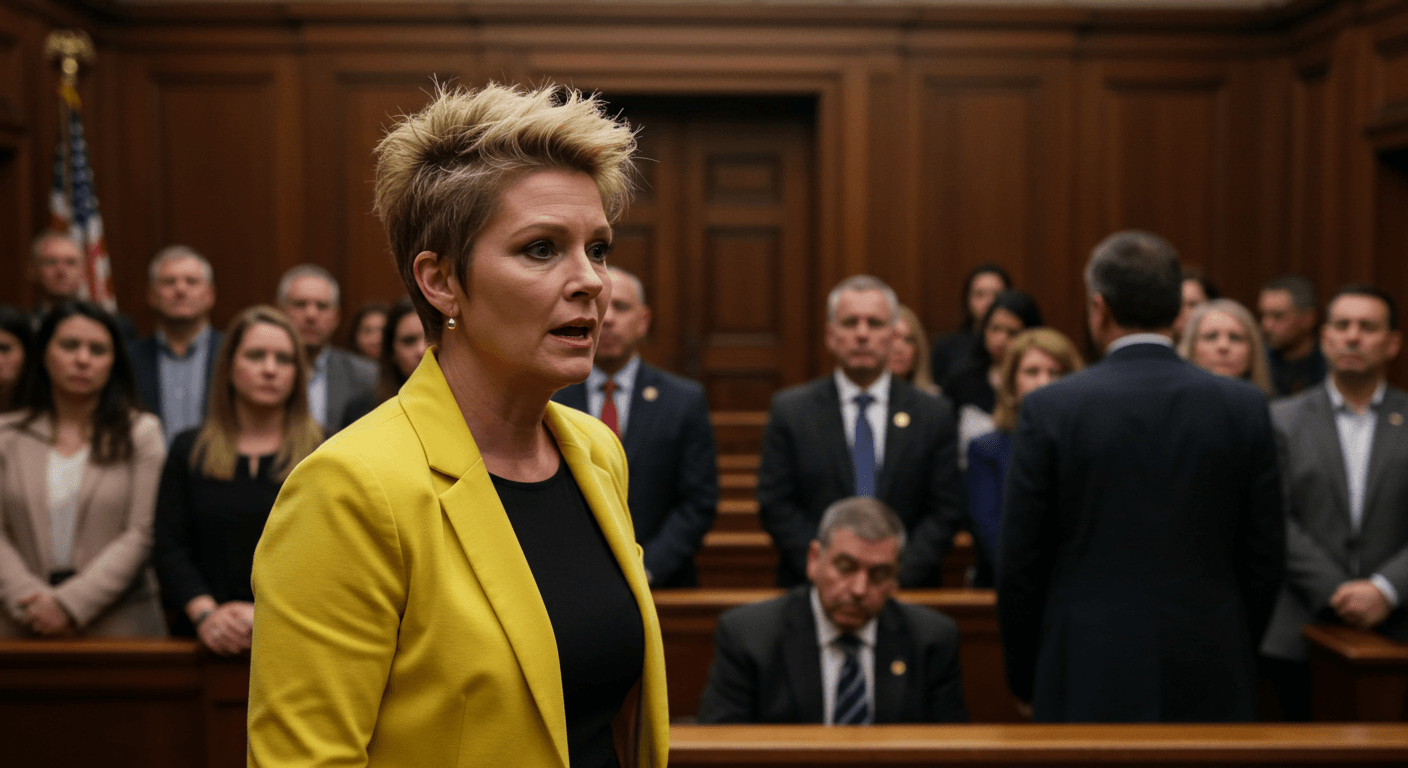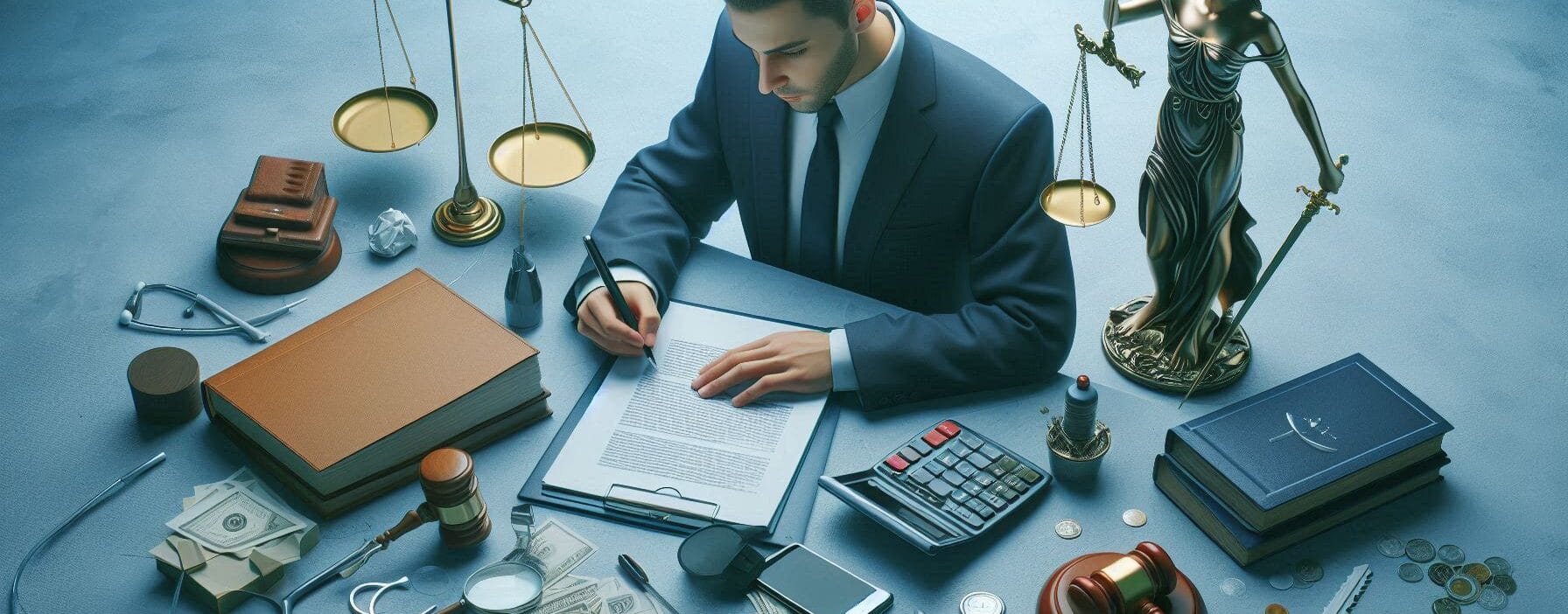Please Note: This post may contain affiliate links. If you click one of them, we may receive a commission at no extra cost to you. As an Amazon Associate, I earn from qualifying purchases.
So, you’ve found yourself in a bit of a jam—an accident has turned your life upside down, and now you’re considering personal injury litigation. First off, I’m sorry you’re going through this.
But let’s take a deep breath and dive into what to expect during the process. Spoiler alert: It’s not as scary as it sounds! Well, most of the time.

Top Takeaways and Key Concepts
Initial Consultation: Provide detailed accident information and ask questions about fees, process, and viability.
Filing a Complaint: Your lawyer files the complaint and serves the defendant, officially starting the case.
Discovery Process: Gather evidence from both sides, including documents, medical records, and depositions.
Negotiation Stage: Evaluate settlement offers carefully; use evidence to support a fair compensation request.
Trial and Verdict: If no settlement, prepare for trial and consider appeals if the outcome is unfavorable.
Summary of This Article
The article outlines the personal injury litigation process, starting with an initial consultation to evaluate your case. It covers filing the complaint, the discovery phase for gathering evidence, and negotiations for possible settlements. If negotiations fail, the case may proceed to trial, where a judge or jury determines liability and compensation. The article also highlights the importance of understanding appeals and the overall step-by-step process to reduce stress and increase chances of a successful outcome.
The Initial Consultation: Where It All Begins

When you first meet with a personal injury lawyer, think of it like a first date—only instead of discussing favorite movies or whether pineapple belongs on pizza (it does), you’ll be talking about your accident and injuries. You might feel nervous; after all, this is about your life and potential compensation.
During this consultation, your lawyer will ask lots of questions. “What happened?” “How did you get hurt?” “Did someone trip you while trying to steal your sandwich?” By the end of this chat, they should have enough information to determine if you have a viable case—or if they need to gently tell you that maybe it was just an unfortunate incident without legal ramifications.
Remember, this meeting is also for you! Ask questions too—like how long they think the process will take or what their fees look like. You want to ensure that both parties are on the same page before embarking on this journey together.
Filing Your Complaint: The Paperwork Parade
Once you’ve decided to proceed with your claim, it’s time for paperwork! Yes, my friend—the fun part where we get to fill out forms that make tax season look like child’s play.
Your lawyer will file a complaint in court outlining your case against the other party (the defendant). This document details what happened and why you believe they should be held responsible for your injuries.
After filing the complaint, there’s typically a waiting period before anything happens. This can feel like watching paint dry while sitting in traffic—but hang tight! This is just part of the process.
By the way, once the complaint is filed, you’ll receive something called “service.” No, not that kind involving food delivery; it means notifying the defendant about your lawsuit so they can respond appropriately. They’ll probably wish they had taken better care when handling that rogue bicycle!
Discovery: Uncovering All The Dirt
Now comes discovery—a fancy legal term for gathering evidence from both sides. Think of it as an investigative reality show where everyone tries to dig up dirt on each other (without cameras). Here’s where things can get interesting!
Your attorney will request documents related to your case from the other party’s insurance company or legal team. This could include medical records, accident reports, or any surveillance footage showing how clumsy that banana peel was! Conversely, expect them to ask for information from you too—like medical bills and treatment history.
Depositions are another key part of discovery. This involves taking sworn statements from witnesses or experts who can support either side’s claims. Picture sitting in front of a camera answering questions while trying not to spill coffee on yourself—it’s nerve-wracking but essential!
Negotiation: Time To Talk Turkey
After discovery wraps up—and assuming no one has thrown any chairs—we move into negotiation mode! Both sides will discuss settlement options outside of court because let’s face it: nobody wants their dirty laundry aired publicly.
During negotiations, your attorney will present evidence supporting your claim and suggest a fair settlement amount based on damages incurred (think lost wages plus pain and suffering). Meanwhile, opposing counsel may try lowball offers faster than I can say “no thank you!”
It’s important here not just to jump at any offer tossed your way; remember those times when someone offered free samples at Costco? Sometimes they’re great deals—and sometimes they’re just tiny cups filled with disappointment! So weigh every offer carefully before making decisions.
Trial: Lights, Camera…Action?
If negotiations don’t lead anywhere satisfying (or if one side refuses to budge), brace yourself for trial time! Now we’re entering serious territory—the courtroom drama unfolds!
At trial day—hopefully without unexpected plot twists—you’ll witness lawyers presenting arguments before a judge or jury who’ll ultimately decide fate based on facts presented throughout litigation processes leading up until now.
Expect testimonies from witnesses brought forth by both sides along with expert opinions providing insight into complex matters surrounding cases like yours.
I won’t sugarcoat it; trials can be lengthy affairs depending upon circumstances involved—sometimes stretching weeks long! But remember: patience pays off when seeking justice (and hopefully some much-needed compensation).
Verdict & Appeal Process: The Final Countdown
Finally—the moment we’ve all been waiting for arrives—the verdict! After deliberations conclude (which may involve more suspense than my last Netflix binge), jurors deliver their decision regarding liability and compensation amounts owed by defendants if found liable.
If successful? Cue victory dance around living room while high-fiving friends—and maybe even treating yourself afterward because why not celebrate wins?! However…if things didn’t go as hoped? Don’t lose heart just yet; there might still be options available through appeals processes ensuring all avenues explored fully before calling quits entirely!
In conclusion folks…while navigating personal injury litigation isn’t exactly akin to strolling through park under sunshine—it doesn’t have come across daunting either when armed knowledge gained along way helps demystify steps involved significantly reducing stress levels overall!
Suggested Resources:
Personal Injury Claims – https://www.nolo.com/legal-encyclopedia/personal-injury-claims-29823.html
Understanding Personal Injury Law – https://www.findlaw.com/injury/personal-injury-overview.html
Litigation Basics – https://www.hg.org/litigation-basics.html
Frequently Asked Questions
What is the first step in the personal injury litigation process?
The first step is an initial consultation with a personal injury lawyer, where you discuss the details of your accident, potential liability, and case viability.
What happens after filing a personal injury complaint?
After the complaint is filed, the defendant is formally notified of the lawsuit and must respond, which officially begins the litigation process.
What is the discovery phase in personal injury cases?
The discovery phase involves both sides collecting evidence such as medical records, accident reports, and depositions from witnesses or experts.
Can a personal injury case be settled before trial?
Yes. Many cases are resolved through negotiation or mediation, where both parties agree on a fair settlement without going to trial.
What happens during a personal injury trial?
During trial, both sides present evidence and witness testimony before a judge or jury, who then determine liability and any compensation owed.
How long does the personal injury litigation process take?
The duration varies depending on the case’s complexity, evidence, and court schedules. It can take several months to a few years to resolve fully.
What can I do if I lose my personal injury case?
If the verdict is unfavorable, you may be able to appeal the decision by presenting new evidence or showing procedural errors that affected the outcome.

Kevin Collier is a legal expert passionate about simplifying complex legal concepts for everyday individuals. With a focus on providing clear, practical information, he covers a wide range of topics, including rights, responsibilities, and legal procedures. Kevin aims to empower readers with the knowledge they need to navigate the legal landscape confidently, ensuring they can make informed decisions regarding their legal matters. Through insightful articles and easy-to-understand resources, he helps demystify the law, making it accessible to all.










